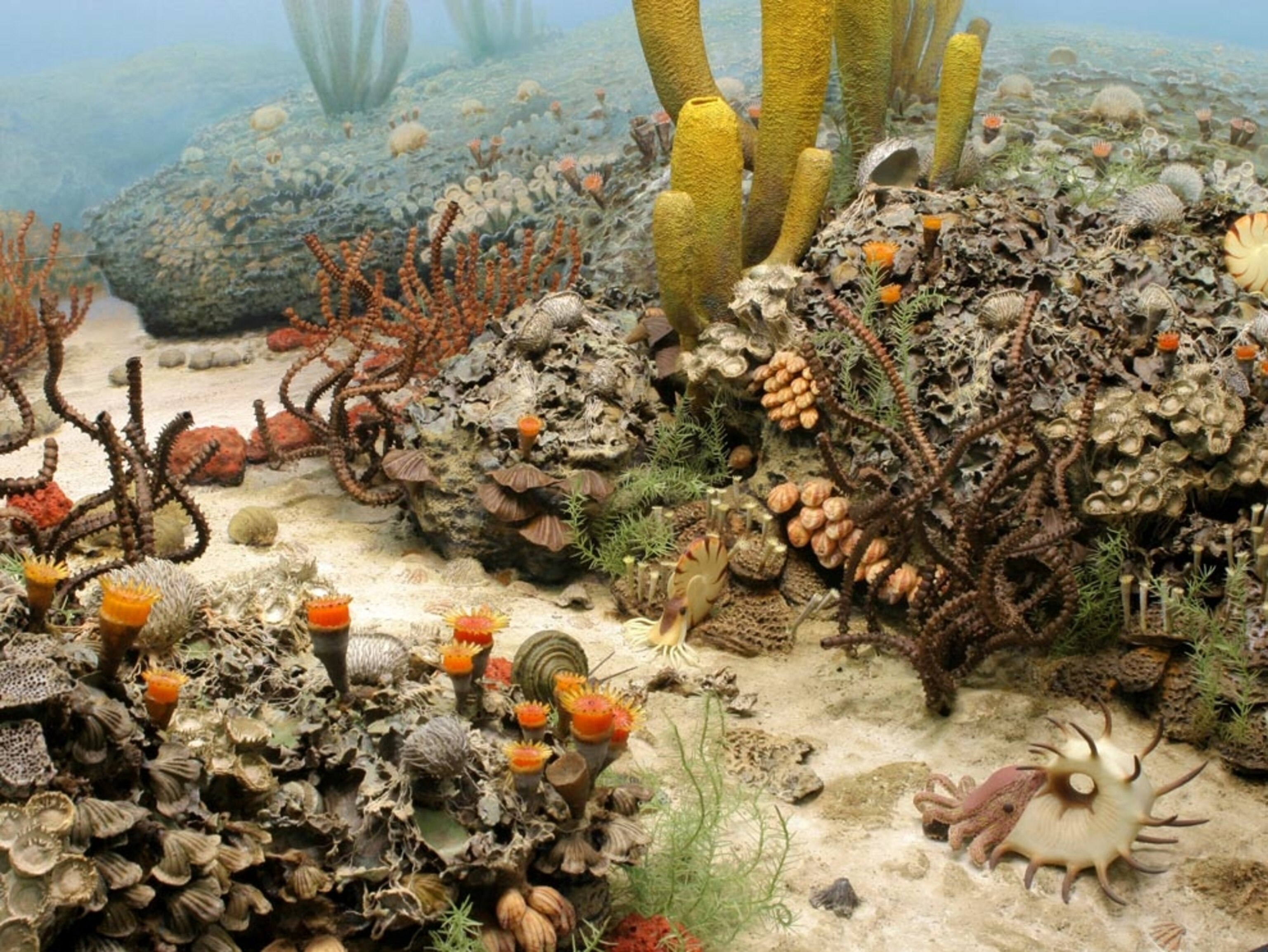The Permian period, which ended in the largest mass extinction the Earth has ever known, began about 299 million years ago. The emerging supercontinent of Pangaea presented severe extremes of climate and environment due to its vast size. The south was cold and arid, with much of the region frozen under ice caps. Northern areas suffered increasingly from intense heat and great seasonal fluctuations between wet and dry conditions. The lush swamp forests of the Carboniferous were gradually replaced by conifers, seed ferns, and other drought-resistant plants.
Early reptiles were well placed to capitalize on the new environment. Shielded by their thicker, moisture-retaining skins, they moved in where amphibians had previously held sway. Over time, they became ideally suited to the desert-type habitats in which they thrive today.
Animal Development
Being cold-blooded, reptiles had to find ways to deal with big daily variations in temperature, from below freezing at night to over 100 degrees Fahrenheit (38 degrees Celsius) during the day. Some of the primitive pelycosaurs, which measured up to ten feet (three meters) long, had sail-like structures on their backs that are thought to have acted as heat exchangers, catching the sun in the morning to help warm the sluggish creatures.
Later, other mammal-like reptiles known as therapsids found an internal solution to keeping warm—scientists suspect they eventually became warm-blooded, conserving heat generated through the breakdown of food. These more metabolically active reptiles, which could survive the harsh interior regions of Pangaea, became the dominant land animals of the late Permian.
The therapsids flourished during the Permian, rapidly evolving many different forms, ranging from dinosaur-like fanged flesh-eaters to plodding herbivores. Some species reached a huge size, weighing in at over a ton. In the latter part of the Permian, smaller varieties emerged, likely warm-blooded and covered in insulating hair. From them, mammals would arise.
The Permian seas came to be dominated by bony fishes with fan-shaped fins and thick, heavy scales. There were large reef communities that harbored squidlike nautiloids. Ammonoids, with their tightly coiled, spiral shells, are also widespread in the Permian fossil record.
Massive Loss of Life
The Permian, however, represented the last gasp for much early prehistoric life. The period, and the Paleozoic era, came to a calamitous close 251 million years ago, marking a biological dividing line that few animals crossed. The Permian extinction—the worst extinction event in the planet's history—is estimated to have wiped out more than 90 percent of all marine species and 70 percent of land animals.
Various theories seek to explain this mass extinction. Some scientists think a series of volcanic eruptions pumped so much debris into the atmosphere that the sun was blocked out, causing a significant drop in temperature and preventing plant photosynthesis, which in turn caused food chains to collapse.
Other scientists point to global climate change, citing evidence for a period of sudden warming and cooling. These rapid extremes of conditions may have meant species were unable to adjust. Other theories include a catastrophic release of methane gas stored under the seabed, triggered by earthquakes or global warming, or a massive asteroid impact.
Perhaps a combination of factors was to blame. But whatever the cause, new animals and plants would evolve to fill the void. Not least among them: the dinosaurs.
You May Also Like
Go Further
Animals
- How can we protect grizzlies from their biggest threat—trains?How can we protect grizzlies from their biggest threat—trains?
- This ‘saber-toothed’ salmon wasn’t quite what we thoughtThis ‘saber-toothed’ salmon wasn’t quite what we thought
- Why this rhino-zebra friendship makes perfect senseWhy this rhino-zebra friendship makes perfect sense
- When did bioluminescence evolve? It’s older than we thought.When did bioluminescence evolve? It’s older than we thought.
- Soy, skim … spider. Are any of these technically milk?Soy, skim … spider. Are any of these technically milk?
Environment
- Are the Great Lakes the key to solving America’s emissions conundrum?Are the Great Lakes the key to solving America’s emissions conundrum?
- The world’s historic sites face climate change. Can Petra lead the way?The world’s historic sites face climate change. Can Petra lead the way?
- This pristine piece of the Amazon shows nature’s resilienceThis pristine piece of the Amazon shows nature’s resilience
- Listen to 30 years of climate change transformed into haunting musicListen to 30 years of climate change transformed into haunting music
History & Culture
- Meet the original members of the tortured poets departmentMeet the original members of the tortured poets department
- Séances at the White House? Why these first ladies turned to the occultSéances at the White House? Why these first ladies turned to the occult
- Gambling is everywhere now. When is that a problem?Gambling is everywhere now. When is that a problem?
- Beauty is pain—at least it was in 17th-century SpainBeauty is pain—at least it was in 17th-century Spain
Science
- Here's how astronomers found one of the rarest phenomenons in spaceHere's how astronomers found one of the rarest phenomenons in space
- Not an extrovert or introvert? There’s a word for that.Not an extrovert or introvert? There’s a word for that.
- NASA has a plan to clean up space junk—but is going green enough?NASA has a plan to clean up space junk—but is going green enough?
- Soy, skim … spider. Are any of these technically milk?Soy, skim … spider. Are any of these technically milk?
Travel
- How to see Mexico's Baja California beyond the beachesHow to see Mexico's Baja California beyond the beaches
- Could Mexico's Chepe Express be the ultimate slow rail adventure?Could Mexico's Chepe Express be the ultimate slow rail adventure?
















